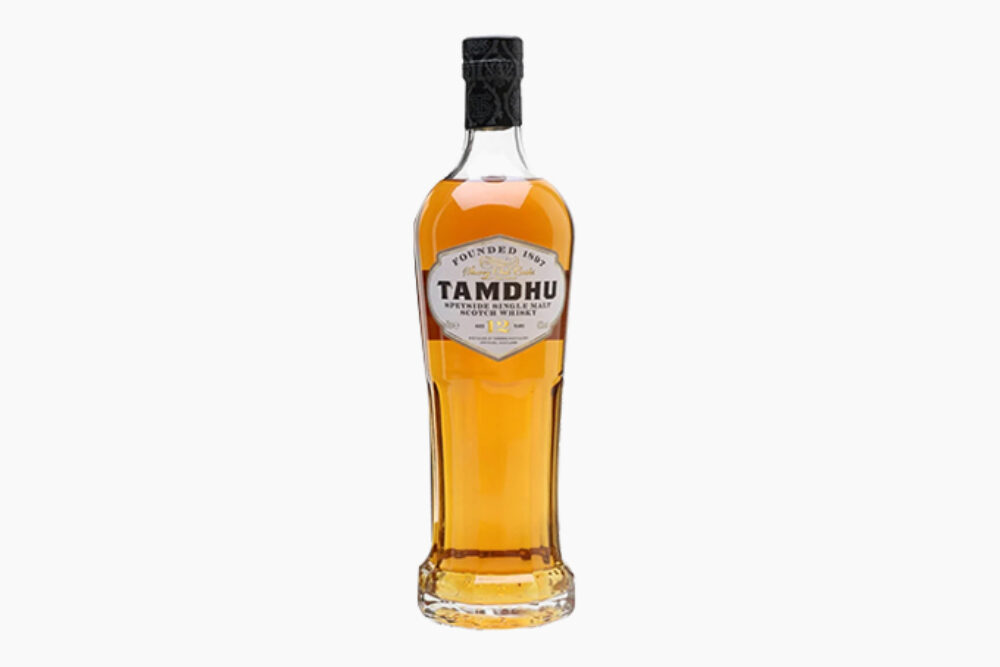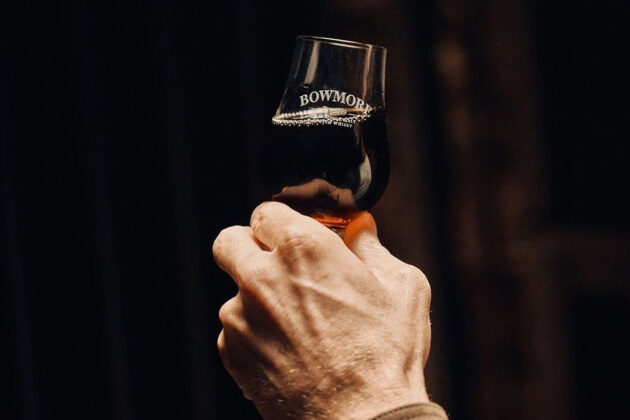
If you’ve got a spare fifty bucks, there are few more satisfying ways to spend it than buying a nice bottle of Scotch. And you can actually get some spectacular ones. While it’s a widely accepted opinion that low-priced whiskies are not even in the same ballpark as those costing more, strong competition in the segment always ensures some quality bottles at fair prices.
In fact, these days there are a number of affordable, entry-level Scotch that just might surprise even veteran enthusiasts with their subtlety and overall refinement. Of course, if you’re trying to impress a client, read no further (try this instead). But if you just want something to sip on your own, with your significant other, or with close friends that will let you feel the satisfaction of having bought a great whisky without paying too much, by all means, check out our list of the best Scotches under $50.
Best Scotch Under $50
Is Single Malt Better Than Blended Scotch?
Scotch diehards may swear by single malt whiskies, but the truth is there are some bad bottles out there, no matter the price or age statement. Blended Scotch, which combines different whiskies from different distilleries, gets a bad rap because of its partial use of grain whisky, which is seen as inferior to single malt whisky. However, there are some brands that view the blending process as an artful process of curation rather than the simple act of combining different batches to save money.
Blended malt whisky may be lumped together with regular “blended” whisky, but actually evades grain whisky altogether (while still using batches from different distilleries) and will produce some fantastic results if done properly.
Tamdhu 12 Year Old

Best Overall: Not a big name, not a million years old, but one excellent Speyside Scotch. Tamdhu flies under the radar because, for years, its corporate parent used much of its production for blends (good ones like Famous Grouse). With a new owner, it’s been revived as a single malt; but its lack of name recognition means that it’s selling for a price that’s much lower than it’s worth. Interestingly, this is the only distiller that uses water from the River Spey, once a time-honored tradition for all Speysides. Aged for over a decade, exclusively in oak sherry casks, its nose is dominated by those two tones. On the tongue, it’s dominated by banana, raspberry jam, and biscuits, but gives way to ground cinnamon and dried fruit on the finish. If you find it, buy as much as you can before everyone else finds out how good it is.
Style: Single malt
ABV: 43%
Tasting Notes: Banana, raspberry jam, biscuits, cinnamon, dried fruit
Scapa Skiren

Runner-Up: Indie heroes Gordon and MacPhail deserve their reputation for making fine affordable Scotches in the face of overwhelming corporate competitors. From way up in the Orkneys, their whiskies have distinct but exceeding subtle characters. First released back in 2015, its Skiren single malt has a hay color that should tell you it’s not bourbon-like at all. Instead, its nose is savory with toffee and mint overtones. The primary flavor note is green apple with slight earthiness and touches of spice and shortbread. And it finishes strong with brown sugar and more apple. If you’re looking to be blown away, look elsewhere. But if you are looking to be charmed into a long-term relationship, give this one a try.
Style: Single malt
ABV: 40%
Tasting Notes: Green apple, spice, shortbread, brown sugar
Laphroaig 10 Year

Best Peated: With the increase in popularity of peated single malts, especially from the Islay region, prices have also gone up. However, you can still get one of the best smoky Scotches at an affordable price point. From one of the best distilleries in Scotland, period, Laphroaig’s 10 Year is a barroom staple for a reason. Cold-smoking its malted barley that’s then dried over a fire made from burning local peat, this whisky is not only a decade old but has one of the more nuanced peated profiles out there, with a dominant smoky profile and notes of seaweed and nuts, and some subtle sweetness.
Style: Single malt
ABV: 43%
Tasting Notes: Smoke, seaweed, nutty, sweet
Johnnie Walker Green Label

Best Blended Malt: Blended and blended malt whiskies may have a bad reputation, but Johnnie Walker has always been the exception to the rule. From one of the biggest whisky brands in the world, this Green Label marries together single malts of at least 15 years from multiple distilleries across the country. Not all of Johnnie’s expressions hold an age statement, and none of them are made exclusively from single malt whisky (the others have some grain whisky mixed in), which gives this blended malt an earthy profile with fruity and floral notes.
Style: Blended malt
ABV: 43%
Tasting Notes: Earthy, fruity, floral
Compass Box Orchard House

Best for Afternoon Sipping: Another brand that is mastering the art of blended whiskies, but for a modern drinker, is Compass Box, who’s spent the past two decades evolving its category. The Scotch label has made everything from blended whiskies to peated blends to even one of the few good blended grains in the space, but this Orchard House is a blended malt to be reckoned with. Made to be a “pre-dinner malt,” this fruit-forward whisky blends single malts from eight different distilleries, including Tomatin, Caol Ila, and Glen Moray — with percentage breakdowns available on Compass Box’s website — and won all kinds of awards upon its release in 2022. After making it through a nose and palate of apple, pear, pineapple, and some citrus, you’ll experience some notes of ginger, Earl Grey tea, honey, vanilla, and even strawberry on the palate.
Style: Blended malt
ABV: 46%
Tasting Notes: Apple, pear, pineapple, citrus, Earl Gray, vanilla, honey, ginger
Loch Lomond Inchmurrin 12 Year Old

Best Highland: Another indie darling, Loch Lomond’s Inchmurrin 12 Year Old is a Highlander whose straw color belies its big, full-bodied flavor and thick mouth feel. The nose is superb with pear being the dominant note, mixed with caramel, maple, and hazelnuts. But the drink is totally different with barley malt pushing around a diverse collection of lesser notes including blackcurrant, toffee, nutmeg, and green apple. And it finishes with even more notes, including anise, cherry, and cinnamon. This is a whiskey that takes a long time to explore completely. And, after one taste, you’ll want to.
Style: Single malt
ABV: 46%
Tasting Notes: Barley, blackcurrant, toffee, nutmeg, green apple, anise, cherry, cinnamon
Royal Lochnagar 12 Year Old

Best for Cocktails: Celebrity endorsements aren’t normally associated with Scotch, but this one is said to have been a particular favorite of Queen Victoria and Prince Albert. They even toured the distillery, which is not far from Balmoral, the royals’ Scottish vacation home. The royal nose would have been able to distinguish herbal tones over vanilla, a touch of sherry, and a little red berry. It’s thicker than you might expect and the taste is primarily malt and honey with light, unobtrusive floral overtones to go with raisins and smoke. And it ends with a delightfully smoky finish of vanilla and allspice. While today’s royals are unlikely to go out of their way to enjoy such an easily affordable Scotch, you can rest assured that Queen Victoria had a pretty good palate. Try this one on a lazy afternoon in a rusty nail or Rob Roy.
Style: Single malt
ABV: 40%
Tasting Notes: Malt, honey, floral, raisings, smoke, vanilla
The Best Scotch Whiskies Under $200

If you’re willing to stretch your bankroll a bit, then head over to our guide to the best Scotch whiskies under $200.








